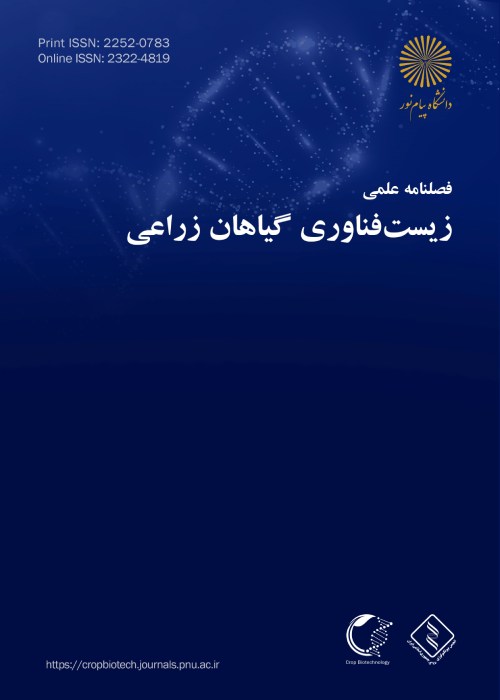Identification of key genes involved in the establishment and maintenance of heat stress memory in Arabidopsis seedlings using microarray data
Author(s):
Article Type:
Research/Original Article (دارای رتبه معتبر)
Abstract:
Plants are able to acquire thermotolerance to the subsequent lethal stress through memorizing previous heat stress (HS) (Priming). A priming effect that can be sustained for several hours, days, or even generations after reverse heat stress, is called heat stress memory. The aim of this study was to identify effective key genes in establishing and maintaining heat stess memory. To achieve this, microarray data of the expression profile of Arabidopsis samples were retrieved from the GEO (Gene expression omnibus) database and differentially expressed genes (DEGs) were identified based on their higher transcriptional activation following recurring stress (in P+T/P treatment comparison) and their sustained induction even 52 hours after stress relief (during memory phase).The identified genes were further analyzed by bioinformatics tools for gene ontology (GO) classification and protein-protein interaction (PPI) networks. GO terms analysis disclosed that the up-regulated DEGs were mainly associated with cellular response to heat, heat acclimation and protein folding. By clustering of PPI networks in the term related to response to heat (in P+T/P treatment comparison), several candidate genes involved in thermomemory were identified including HSP70T-2, HSP91, AR192, HSP60, HSP70, BIP2, J2, CLPB4, HOP3, HSP101, ROF1, HSFA3, HSFA2, HSP70B, CLPB3, FES1A, MBF1C. Also, based on the sustained differential expression of genes even 52 hours after the priming phase, it was determined that genes responsible for maintaining heat stress memory were mainly members of the small heat shock protein family (sHSPs) such as HSP17.6, HSP21, HSP17.6II, HAS32, HSP17.4, HSP18.2 and HSP22. KEGG (Kyoto Encyclopedia of Genes and Genome) pathway analysis revealed that the HS memory genes were mainly involved in protein processing in the endoplasmic reticulum (ER) and oxidative phosphorylation. Furthermore, the analysis of cis-regulatory elements in the promoter regions of the thermomemory genes revealed that the transcription factors families of bZIP, AP2;B3;RAV, MYB/SANT, HD-ZIP and GATA; tify had the highest binding sites in their upstream regions. In summary, these findings provide useful information about functional and regulatory analysis of genes involved in the establishment and maintenance of heat stress memory, as well as their protein network interactions. This information can be used to improve the heat tolerance capacity of plants under extreme heat stress.
Keywords:
Language:
Persian
Published:
Journal of Crop Biotechnology, Volume:12 Issue: 40, 2023
Pages:
63 to 81
https://magiran.com/p2616576
دانلود و مطالعه متن این مقاله با یکی از روشهای زیر امکان پذیر است:
اشتراک شخصی
با عضویت و پرداخت آنلاین حق اشتراک یکساله به مبلغ 1,390,000ريال میتوانید 70 عنوان مطلب دانلود کنید!
اشتراک سازمانی
به کتابخانه دانشگاه یا محل کار خود پیشنهاد کنید تا اشتراک سازمانی این پایگاه را برای دسترسی نامحدود همه کاربران به متن مطالب تهیه نمایند!
توجه!
- حق عضویت دریافتی صرف حمایت از نشریات عضو و نگهداری، تکمیل و توسعه مگیران میشود.
- پرداخت حق اشتراک و دانلود مقالات اجازه بازنشر آن در سایر رسانههای چاپی و دیجیتال را به کاربر نمیدهد.
In order to view content subscription is required
Personal subscription
Subscribe magiran.com for 70 € euros via PayPal and download 70 articles during a year.
Organization subscription
Please contact us to subscribe your university or library for unlimited access!


